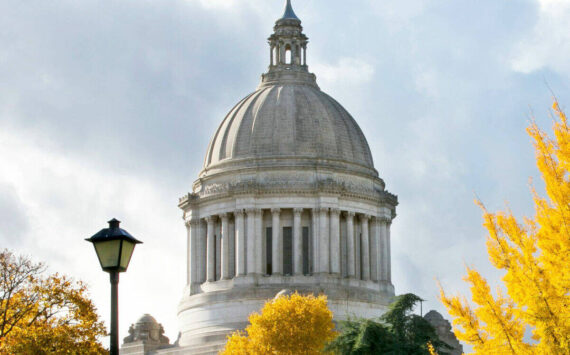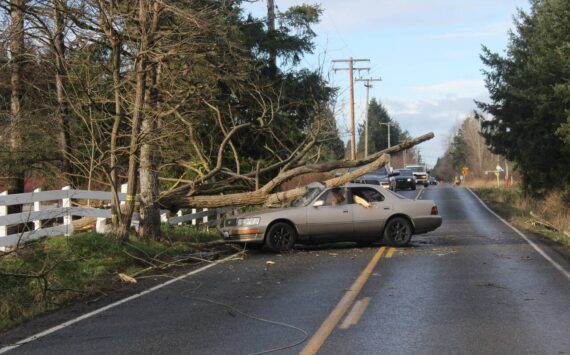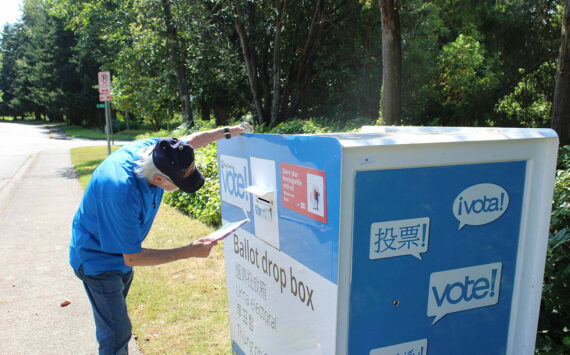UW Tacoma
A contract for demolition of what remains of the historic Japanese Language School building in the 1700 block of Tacoma Avenue South has been awarded by the University of Washington to Unimark Construction Group of Seattle.
Under terms of the contract, which allows work to begin this week, demolition of the building at the western edge of the UW Tacoma campus must be completed within 30 days.
Acting on its commitment to preserve and celebrate the heritage of the building, UW Tacoma is making plans to commemorate the school. As part of this commemoration, two UWT professors are working on an oral history project about the school.
The Japanese Language School has been largely vacant since World War II, when members of a bustling Japanese American community were transported to internment camps. Most didn’t return. UWT acquired the Japanese Language School property in the early 1990s. At that time, a study was commissioned to evaluate the building’s potential, and tenants were sought with no success. In 1993, the University received approval from the Tacoma Landmarks Commission to remove the building, but did not act to do so. In 2001, the City of Tacoma notified UWT that the building was a hazard and re-approved the original authorization to pull down the building.
In 2002, UWT commissioned BOLA Architects of Seattle to explore alternatives to tearing the building down. The firm assembled a team of architects, landscape architects and a structural engineer specializing in preservation. The team concluded that rehabilitating the building would be costly and have doubtful historic preservation benefit. BOLA recommended the University instead focus on heritage projects to preserve the history of the building.
The initial phase of demolition will involve abatement of environmental hazards. Siding coated with lead-based paint and asbestos present in the building must be removed and be legally disposed of. Salvageable parts of the building, including blackboards and a palladium window, will be preserved.
Interpretive materials to memorialize the Japanese Language School are being planned as demolition of the building begins. An oral history project related to the school has been supported by a grant from the UWT Founders Endowment. Professors Mary Hanneman and Lisa Hoffman are leading the research, which has involved interviewing people, now mostly in their 80s, who attended the Japanese Language School as children. Last winter a full day of events held on campus also commemorated the history of the Japanese Language School. Already, a calligraphy-teaching chart removed from the school is displayed on campus, and some additional printed artifacts have been moved to a UW library.
Up the hill from the current UWT campus, the language school was at the heart of a bustling Japanese community before World War II. Built in 1922 with an addition completed in 1926, the school was a place for Japanese children to study language and Japanese culture. When America entered the war, the building was used to gather people of Japanese descent before sending them to internment camps. Unlike other urban centers, where Japanese communities returned and thrived, downtown Tacoma saw few of its Japanese return.
Tacoma Community College
A new environmentally friendly parking lot is under construction at Tacoma Community Colleges Main Campus. An area north of the college gymnasium is being paved and landscaped to create a 248-spot overflow parking lot.
The project utilizes the natural ability of the native soil to filter water run-off. The parking lot is being constructed with interlocking pavers that create a pervious surface. As rain water passes through the pavers, it infiltrates into two layers of aggregate and a layer of filter fabric before seeping to the soil below.
Compared to a traditional asphalt construction, this system eliminates the need for an additional detention pond that would pass through Leach Creek and eventually empty into Puget Sound. With this form of construction, the parking lot will not use the local storm drain system, thus minimizing any impact to the quality of water in the area.
TCC has been working closely with the City of Tacoma on this pilot project, ensuring that it meets and exceeds environmental regulations. Monitoring wells have been included for periodic inspection and analysis of how the infiltration system is performing. Prior to construction, a survey of the area was also conducted to ensure that the project is outside the required wetlands impact boundary.
This is a fairly new system of construction that has only been used in a handful of local sites, including a Lowes parking lot in Lacey and some parking lots at The Evergreen State College. TCCs project is the largest project using these same construction materials to date, said project supervisor Phillip Hill, Capital Projects Manager at TCC, though the method is steadily gaining popularity. There are many new similarly designed parking lots being constructed presently, Hill added.
The addition of a new overflow parking lot will fulfill the needs of the growing student population at TCC. Funding for the $515,000 project comes from a portion of the college parking and safety fee; each student pays the $15 fee each quarter.
Design of the new parking lot is by John Knowles and Associates of Tacoma. Harlow Construction of Lacey is building the structure. The project is set to be complete in mid-September.




